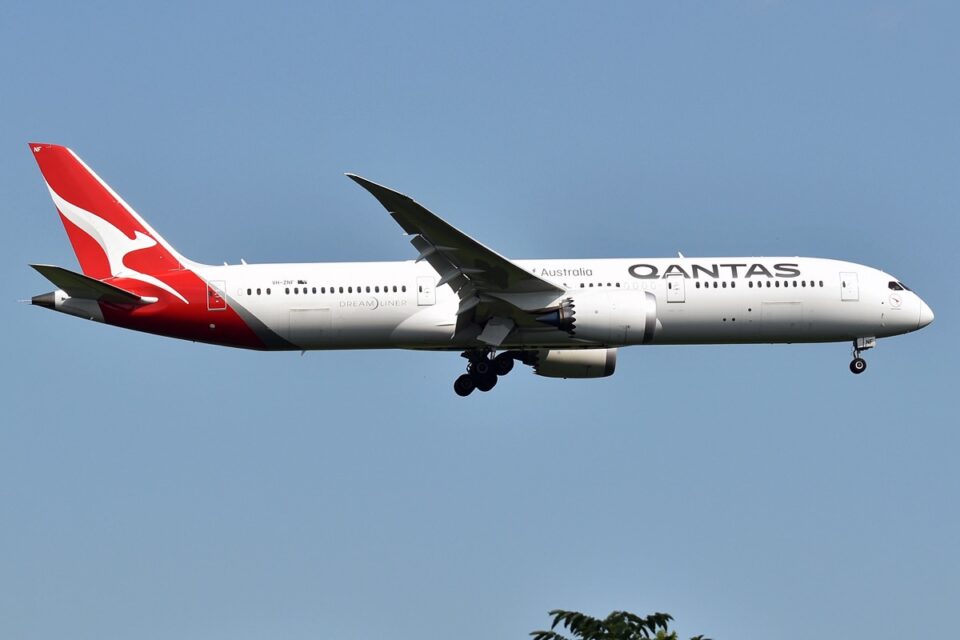Airlines
Qantas Takes off again between Brisbane and Tokyo
The flight offers the first direct connection between Brisbane and Tokyo’s Haneda Airport

Queensland is gearing up for an influx of new visitors from Japan just in time for the summer holidays with the return of Qantas flights between Brisbane and Tokyo.
AirAsia X takes flight to Tokyo-Haneda(Opens in a new browser tab)
The flight offers the first direct connection between Brisbane and Tokyo’s Haneda Airport by any airline, replacing Qantas’ previous route to Narita Airport, and will save passengers more than an hour travelling into Tokyo city on arrival. Inbound flights on the route are timed to connect well with the rest of Qantas’ Australian domestic network, including popular destinations across Queensland, reopening tourism opportunities for the Sunshine State.
The resumption of Brisbane-Tokyo flights also provides Australian producers in the region with more cargo space on Qantas’ freight network for the export of fresh produce such as chilled meat, seafood, dairy, fruit and vegetables. Qantas’ direct flight from Tokyo Haneda to Brisbane is supported by Queensland’s $200 million Attracting Aviation Investment Fund in partnership with the State’s four international airports.
Virgin Australia unveils business class suites for A330 fleet.. !!(Opens in a new browser tab)
Qantas will fly its Airbus A330 aircraft, with Business Suites and lie-flat beds, from Brisbane to Tokyo three days per week on Mondays, Thursdays and Saturdays, offering more than 1,700 seats on the route each week. The Qantas Group operates more than 20 return flights per week from Australia to Japan. This includes Qantas’ flights from Brisbane to Tokyo Haneda and Sydney to Tokyo Haneda.
Qantas flights between Melbourne and Tokyo Haneda will resume in March 2023. The Group’s low-fares airline, Jetstar, operates flights from Cairns to Tokyo Narita and Osaka, and Gold Coast to Tokyo Narita. Customers traveling to other destinations across Japan can connect through Haneda to domestic services operated by Qantas’ partner JAL.

Airlines
Air India Rolls Out A350s for Delhi-New York JFK and Newark Routes

In a major development for North American travelers, Air India has announced the deployment of its state-of-the-art Airbus A350-900 aircraft on two key routes: Delhi to New York and Delhi to Newark.
The service on the Delhi-New York route will commence on November 1, 2024, while the Delhi-Newark route will see its inaugural flight on January 2, 2025.
The introduction of the air india a350 will bring significant enhancements to Air India’s offerings, particularly with the launch of its Premium Economy class. air india retrofit This new class will feature 24 wide seats arranged in a 2-4-2 configuration, providing passengers with extra legroom and a more comfortable flying experience.
Soon, Air India aircraft will feature onboard WiFi & all-new cabins: Click here
“We are encouraged by the positive guest feedback we have received from the domestic deployment of our air india a350 interior to offer our hero product on the Delhi-New York JFK and Delhi-Newark routes. This is a significant leap forward for our U.S. operations that also underscores our commitment to continuous improvement,” said Campbell Wilson, Chief Executive Officer & Managing Director of Air India.
The A350’s Business class will set new standards with 28 private suites, each equipped with full-flat beds, direct aisle access, and personal wardrobes. Economy class will be configured to accommodate 264 passengers in a 3-4-3 layout. Across all cabins, passengers will enjoy the latest Panasonic eX3 in-flight entertainment system, offering over 2,200 hours of content.
Air India’s First A350-900: Interior, Routes, &Inflight Features: Click here
This strategic deployment marks a notable enhancement in Air India’s U.S. operations, with 60% of its flights to the U.S. now featuring new or upgraded cabin interiors. The air india new international routes currently operates 51 weekly flights to five U.S. destinations: New York JFK, Newark, Washington DC, Chicago, and San Francisco.
The revamped cabins, advanced in-flight entertainment systems, and improved service standards represent air india wifi commitment to providing a superior travel experience. “We believe this enhanced offering will solidify Air India’s position as a leading carrier and attract travellers seeking a world-class flying experience between India and the United States,” the airline stated.
Seats on these flights are now available for booking on Air India’s website, mobile app, and through travel agents, ensuring that passengers can easily plan their journeys on these newly upgraded routes.
Air India Economy vs Qatar airways economy: which is best?:Click here
-

 Travel1 week ago
Travel1 week agoAir India to Expand US Operations with Three New Routes After a Decade
-

 Travel2 weeks ago
Travel2 weeks agoWhy We Should Avoid These Stamps in a Passport
-

 Airlines1 month ago
Airlines1 month agoInvestigations Reveal Fake Chinese Titanium in Boeing and Airbus Jets
-

 Tech4 weeks ago
Tech4 weeks agoChina’s CATL Plans 1,800-Mile Electric Plane Launch by 2027
-

 Airport3 days ago
Airport3 days agoTop 10 Largest Airports in the World by Size
-

 Aerospace4 weeks ago
Aerospace4 weeks agoChina’s Fighter Jets Turn Wings into Autonomous Drones
-

 Airlines4 days ago
Airlines4 days agoAir India Rolls Out A350s for Delhi-New York JFK and Newark Routes
-

 Defence3 weeks ago
Defence3 weeks agoBoeing Enhances Chinook with New Engines and Block II Upgrades at $96 Million







